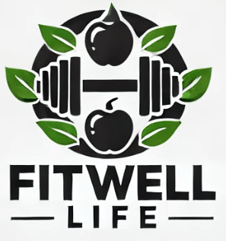Unlocking Strength: A Journey to Lifelong Fitness for Men Aged 35-55
1/2/20258 min read


The Importance of Fitness in Midlife
As men progress through midlife, typically between the ages of 35 and 55, maintaining an active lifestyle becomes increasingly crucial for overall health and well-being. Fitness during this stage of life plays a significant role in preventing various chronic diseases, enhancing mental health, and improving the overall quality of life. Research indicates that adults who engage in regular physical activity significantly reduce their risks for conditions such as obesity, heart disease, and type 2 diabetes. A study published in the Journal of the American College of Cardiology highlights that men within this age group who participate in moderate exercise for at least 150 minutes a week can lower their risk of developing cardiovascular issues by more than 30%.
Moreover, the mental health benefits derived from maintaining fitness during midlife are equally important. Physical activity is known to release endorphins and boost mood, providing a natural coping mechanism for stress and anxiety. Men who incorporate exercise into their routines often report heightened levels of self-esteem, improved cognitive function, and decreased symptoms of depression. Additionally, staying active fosters opportunities for social interaction, which can significantly enhance emotional well-being as men navigate the challenges associated with aging.
There are numerous personal anecdotes that exemplify the positive impacts of a fitness-oriented lifestyle. For instance, many men in midlife have shared transformative experiences such as rediscovering joy in physical activities, forming new friendships through group exercises, and even experiencing increased energy levels that improve productivity in both their personal and professional lives. By recognizing the importance of fitness, men in this age bracket can take proactive steps towards creating healthier, more fulfilling lives.
Choosing the Right Type of Exercise
For men aged 35-55, selecting the appropriate type of exercise is critical for maintaining health and fostering long-term fitness. This age group experiences changes that can impact physical capabilities, making it essential to tailor exercise regimens accordingly. A well-rounded fitness program should generally encompass cardiovascular workouts, strength training, flexibility exercises, and balance workouts, each offering unique benefits.
Cardiovascular workouts, such as running, cycling, or swimming, are fundamental for enhancing heart health and stamina. Engaging in aerobic activities promotes efficient blood circulation, reduces the risk of cardiovascular diseases, and aids in weight management. Ideally, men should aim for at least 150 minutes of moderate-intensity aerobic activity per week to reap these benefits effectively.
Strength training is equally important, especially as muscle mass naturally declines with age. Incorporating resistance exercises—like weightlifting, bodyweight workouts, or resistance band sessions—can bolster muscle strength, enhance bone density, and boost metabolism. This aspect of fitness is crucial not only for physical appearance but also for functional mobility in daily activities, making it an essential component of any fitness regimen.
Flexibility exercises, including stretching and yoga, deserve attention as well. Maintaining flexibility is vital in reducing the risk of injuries and improving overall range of motion. Regularly engaging in flexibility workouts can alleviate muscle tension, enhance postural alignment, and improve performance in both strength and cardiovascular training.
Lastly, balance workouts contribute to functional fitness, particularly as one ages. Activities such as tai chi or balance-specific exercises bolster stabilization, reducing the risk of falls and injuries. By integrating these diverse fitness components into a weekly routine, men can cultivate a balanced and effective approach to lifelong fitness.
Setting Realistic Fitness Goals
Embarking on a fitness journey requires a thoughtful approach to goal setting, particularly for men aged 35-55, who may face unique physiological and lifestyle challenges. Establishing realistic fitness goals is essential to maintain motivation and ensure long-term success. When setting these goals, it is beneficial to adopt the SMART criteria—Specific, Measurable, Achievable, Relevant, and Time-bound. This framework not only clarifies objectives but also enhances accountability throughout the fitness journey.
Firstly, it is important to define specific goals. Instead of aiming to "get fit," a more specific objective could be "to run 5 kilometers without stopping." Such clarity allows for a focused approach and a tangible target. Next, measurable goals help track progress. Utilizing metrics, such as time, distance, or weight lifted, provides a solid foundation for assessing achievements and setbacks.
Ensuring that goals are achievable is crucial. Setting overwhelming targets can lead to frustration and injury, particularly for individuals new to exercise or returning after a break. Therefore, it can be beneficial to begin with smaller, incremental goals that gradually challenge one's fitness level as physical capability improves.
Moreover, relevant goals should resonate with personal interests and lifestyle. If an individual has a passion for cycling, setting a goal to participate in a local cycling event enhances engagement and commitment. Lastly, time-bound goals instill a sense of urgency, encouraging individuals to stay focused over defined periods and reassess progress regularly.
Tracking progress through fitness journals or mobile applications is invaluable in this process. These tools facilitate adjustments to goals as needed, ensuring that the individual’s fitness plan remains aligned with their evolving life circumstances and progress. By prioritizing realistic and personalized goals, men can effectively navigate their fitness journeys and ultimately achieve a healthier, more active lifestyle.
Incorporating Fitness into Your Daily Routine
In the pursuit of lifelong fitness, particularly for men aged 35-55, integrating physical activity into daily routines is crucial. Busy lifestyles can sometimes make it difficult to prioritize fitness; however, practical strategies can facilitate this essential shift toward a healthier lifestyle. One effective approach is to schedule workouts as if they were important appointments. By blocking out dedicated time in your calendar for exercise, you create a commitment that is harder to ignore. Treating fitness with the same level of importance as work meetings or family obligations can reinforce its necessity and ensure consistency.
In addition to scheduling, it is beneficial to find exercises that can be done in the comfort of your home or even during the workday. Innovations in online fitness classes can provide flexibility, allowing you to partake in effective workouts without the need to travel to a gym. Simple routines such as bodyweight exercises or yoga can be executed in minimal space, offering both convenience and efficiency. Moreover, for those preferring to stay active during the workday, consider taking brief breaks to stretch or perform light exercises. These quick sessions help break up long periods of sitting and contribute to your overall fitness goals.
Furthermore, integrating more physical activities into daily tasks can elevate your fitness level without requiring extensive time. Simple changes, such as taking the stairs instead of the elevator, walking or biking to work, or standing during phone calls, can accumulate significant health benefits over time. Emphasizing the cumulative effect of these small lifestyle changes can empower men to view fitness not as an overwhelming task, but as an accessible and manageable component of their everyday lives. As such, the path to enhanced physical well-being becomes more achievable and sustainable.
Nutrition: Fueling Your Fitness Journey
Nutrition plays a pivotal role in enhancing fitness levels and promoting overall health, particularly for men aged 35-55. As individuals embark on their journey to lifelong fitness, it is essential to understand how proper nutrition complements workout efforts. A balanced diet not only supports muscle recovery and growth but also provides the energy needed to engage in regular physical activity.
Macronutrient ratios can significantly impact fitness outcomes. A common recommendation suggests that a diet for active men should consist of approximately 40-50% carbohydrates, 25-35% fats, and 20-30% proteins. Carbohydrates serve as a primary energy source, while proteins are crucial for muscle repair and growth. Healthy fats, on the other hand, aid in overall health and hormone regulation. Consulting with a nutritionist can help tailor these ratios based on individual goals and activity levels.
Hydration is another key factor. Dehydration can impair physical performance, making it vital to maintain adequate fluid intake, especially during and after workouts. Aim to drink at least eight 8-ounce glasses of water a day, and consider increasing this amount depending on humidity and exercise intensity. Electrolyte-replenishing beverages can also be beneficial for recovery following intense workouts.
Incorporating superfoods into one’s diet can further enhance performance. Foods like quinoa, salmon, spinach, and berries are rich in essential nutrients and antioxidants that can improve recovery and support overall health. Meal preparation can streamline the process of maintaining a nutritious diet. Planning and prepping meals in advance allows individuals to make informed choices and avoid unhealthy snacking. Moreover, timing meals around workouts can optimize energy levels—consuming a balanced meal 1-3 hours before exercise can provide necessary fuel, while a post-workout meal rich in protein and carbohydrates can facilitate muscle recovery.
By focusing on nutrition, men in this age group can significantly improve their fitness journey, augmenting the benefits of their workout routines while enhancing their overall well-being.
Overcoming Common Barriers to Fitness
Men aged 35 to 55 often encounter a range of barriers that can impede their pursuit of fitness and overall health. Among these, time constraints are perhaps the most significant. Balancing work responsibilities, family obligations, and personal commitments can leave little room for exercise. To tackle this challenge, it is crucial to adopt a flexible approach to fitness. Men can consider integrating short, high-intensity workouts into their schedules, allowing for effective exercise sessions that fit within a busy lifestyle. Utilizing early morning or late evening slots can also maximize time efficiency, making fitness a consistent part of daily routines.
Another common obstacle is motivation. As individuals age, the initial enthusiasm for fitness may wane, leading to decreased adherence to workout regimes. Setting specific, measurable, achievable, relevant, and time-bound (SMART) goals can significantly aid in maintaining motivation. Engaging in activities that spark joy or foster social connection, such as group exercises or fitness classes, can further enhance motivation levels. Tracking progress and celebrating small victories can cultivate a positive mindset and encourage sustained commitment to fitness.
Physical limitations, due to age-related conditions or previous injuries, can also act as a barrier. However, understanding one’s body and working within its limitations is essential for establishing a sustainable fitness routine. Consulting with healthcare or fitness professionals can provide tailored advice that accommodates any existing health conditions. Incorporating activities such as low-impact aerobic exercises, strength training, and flexibility routines can facilitate a comprehensive fitness approach that builds strength without overexertion.
Addressing these barriers involves a multifaceted strategy focused on time management, motivation enhancement, and accommodating physical limitations. By developing a resilient mindset and implementing actionable solutions, men aged 35-55 can successfully navigate these challenges and maintain a lifelong commitment to fitness.
The Long-Term Benefits of Staying Active
Maintaining an active lifestyle as men age, particularly between the ages of 35 and 55, offers numerous long-term benefits that are crucial for overall health and well-being. Regular physical activity greatly contributes to improved mental health by reducing symptoms of anxiety and depression. Engaging in exercise releases endorphins, the body’s natural mood lifters, fostering a positive outlook and enhancing emotional resilience. This mental clarity and emotional stability can significantly improve day-to-day living, enabling men to cope better with stressors both at work and in personal life.
In addition to mental health benefits, staying active plays a vital role in increasing longevity. Numerous studies have shown that regular exercise is associated with a lower risk of chronic diseases, such as heart disease, diabetes, and certain types of cancer. Activities like strength training, walking, and aerobic exercises not only help maintain a healthy weight but also improve cardiovascular health, boosting overall endurance and vitality. The integration of consistent activity into daily routines can lead to a longer, healthier life.
Furthermore, an active lifestyle enhances overall quality of life. As men reach their later years, maintaining mobility and physical strength becomes essential. Achieving and sustaining fitness can improve daily functions, enabling individuals to engage more fully in family activities, travel, and personal hobbies. A commitment to fitness often inspires a ripple effect, encouraging family members and peers to adopt healthier habits as well.
Successful stories abound of men who transformed their lives through commitment to fitness, leading to life-changing health benefits. These individuals serve as powerful examples, proving that it is never too late to begin a fitness journey. As you consider your health, remember that an active lifestyle is not merely a phase; instead, it is a lifelong endeavor that can yield lasting rewards. Embracing fitness today lays the foundation for a more vibrant future.
Functional Fitness for Men: Age 35-55
Enhance your strength and mobility with this comprehensive functional fitness routine, tailored specifically for men in midlife.

Wellness
Your source for health, fitness, and nutrition.
Fitness
Nutrition
© 2024. All rights reserved.


